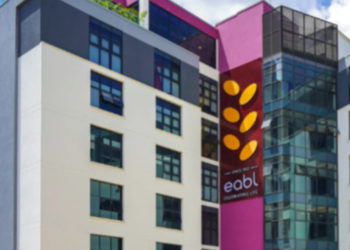Kenya is facing a credit crisis of unprecedented scale. The ratio of Non-Performing Loans has increased to 17.2% as of February 2025 suggesting that banks could be forced to raise their coverage for expected credit losses which is in line with the International Financial Reporting Standards. This in turn has triggered widespread auctions of properties around the country as banks struggle to recover assets. From family homes to commercial properties, the fallouts are visible across the country. However, behind all this lies a more complex reality, that is, foreign capital is playing a significant role in how Kenya’s debt crisis is managed and manipulated.
Kenya’s top banks are no longer strictly national. Institutions such as ABSA and Standard Chartered are already subsidiaries of multinational companies. Others, including KCB and Equity Bank, have significant foreign shareholding through institutional investors, including European development funds and U.S.-based hedge funds. Moreover, foreign private equity firms have also entered Kenya’s finance industry, particularly through fintech firms and failing asset investment firms. These entities often buy and underwrite chunks of loans that are considered risky or non-performing. This can be attributed to the emerging trend of bad debts being categorized as an asset class of its own. In global markets, bad debts are traded, with favourable returns when collateral such as land and buildings are seized and liquidated.
The increase in auction levels may appear as a mechanical bank response to high default rates. However, a closer look reveals a deeper shift in the motivations behind asset recovery. Rather than recovering the lost principal, many banks are leveraging auctions as opportunities to unlock value from the collateral attached to non-performing loans. For instance, as banks sell off land and buildings, some transactions are quickly flipped in the secondary market, often through channels that tie back to international investors. The process turns bad loans into profitable asset deals, while reducing the visibility of who ultimately ends up controlling the properties. This emerging structure effectively transforms loan default into a lucrative pipeline for asset consolidation, with an increasing share of ownership ending up outside traditional local hands. The issue is no longer merely about defaulting borrowers but systemic asset transfer under the guise of recovery. There are also signals that loan recovery policy itself is being shaped by foreign financial interests. Banks with substantial international backing have adopted uniform asset recovery strategies that reflect global standards but often ignore local social realities. Legal experts point to increasingly aggressive litigation, shrinking grace periods, and repossessions initiated even when borrowers have repaid the majority of the loan.
Skeptics argue the impact of these trends are immense. They include, concentration of assets where, seized homes, land, and businesses end up in the hands of a small elite. Second, loss of economic sovereignty, when repayment policies are tailored to suit global investor appetites, local financial resilience erodes. This will encourage predatory cycles where, borrowers most affected by inflation and income shocks are the same ones being targeted for repossession.
Without urgent attention to this matter, Kenya is at a high risk of gradual transfer of economic power, that is, from normal citizens to foreign investors who are thriving on defaulted loans.















